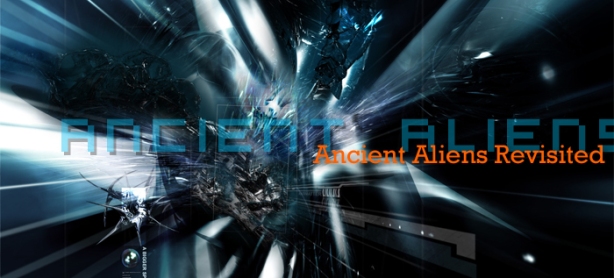Was Earth ever inhabited by a very advanced civilization, if not by aliens, in the distant past? Was there beings of considerably higher intelligence, perhaps much higher than ours, ever on this planet? The question has been put forward time and again and each time it has been ridiculed by the mainstream scholarship, no end. Each time the statement has met a dead end thought process in form of a very sanitized view of the world. However crazy we are, we continue our quest for the trust, each time presenting the conventional thinkers, archeologists, historians and scientists a newer wave of evidence that they cannot deny. This write up is about such evidence, that of hi tech warfare, perhaps more lethal than what we are capable of today, and waged with weapons that puts contemporary weaponology to sheer shame.
The story begins when a layer of radioactive ash was discovered in Rajasthan, India. It covered a three-square mile area, ten miles west of Jodhpur. The research occurred after a very high rate of birth defects and cancer was discovered in the area. The levels of radiation registered so high on investigators’ gauges that the Indian government cordoned off the region. Scientists then apparently unearthed an ancient city where they found evidence of an atomic blast dating back thousands of years: from 8,000 to 12,000 years. The blast was said to have destroyed most of the buildings and probably a half-million people.
The mysterious beginning of civilization in Sumer, nearly six thousand years ago, was matched by its equally sudden and mysterious demise. The circumstances behind this demise are generally brushed over by the general history books. They tell us that this magnificent civilization beget a rival in the neighbouring and equally mysterious Akkadian empire, and that around 2000 BC both the Sumerians and the Akkadians disappeared for no particular reason. We are then told that two new civilizations, the Babylonians and the Assyrians, arose as if from nowhere to dominate Mesopotamia. With this huge over-simplification, the matter is left to rest. And yet a mass of evidence does exist, describing the downfall of Sumer, so why does this evidence not appear in the history books?
The answer is that the nature of the final disaster which struck the Sumerians mystified them as much as it mystifies scholars today. The Sumerians’ description of the disaster is so strange that it is conveniently regarded as mythology and brushed to one side. It is archaeological fact, however, that Sumer’s demise came suddenly. In 1985, Zecharia Sitchin put forward a credible scenario for the use of nuclear weapons to the west of Sumer, at a date which coincided with its mysterious downfall.
The following translations have been published by the foremost expert on Sumer, Professor Samuel Kramer.
On the land [Sumer] fell a calamity, one unknown to man;
one that had never been seen before,
one which could not be withstood.
A great storm from heaven…
A land-annihilating storm…
An evil wind, like a rushing torrent…
A battling storm joined by a scorching heat…
By day it deprived the land of thebright sun, in the evening the stars did not shine…
The people, terrified, could hardly breathe;
the evil wind clutched them, does not grant them another day…
Mouths were drenched with blood, heads wallowed in blood…
The face was made pale by the Evil Wind.
It caused cities to be desolated, houses to become desolate;
stalls to become desolate, the sheepfolds to be emptied.
Sumer’s rivers it made flow with water that is bitter;
its cultivated fields grow weeds, its pastures grow withering plants.
This episode is also captured in whats called the “The Case of the Evil Wind”
At the end of the third millennium B.C. the great Sumerian civilization came to an abrupt end. Its sudden demise was bewailed in numerous lamentation texts that have been discovered by archeologists. The texts ascribed the calamity to an Evil Wind that came blowing from the west (from the direction of the Mediterranean Sea) — a deathly cloud that caused excruciating death to all living beings, people and animals alike, that withered plants and poisoned the waters.
In The Wars of Gods and Men, Zecharia Sitchin saw an explanation of the sudden death in a long text known to scholars as The Erra Epos, that described a chain of events that ultimately led to the use of “Weapons of Terror” in a conflict between opposing clans of the Anunnaki (“Those who from Heaven to Earth came”).
Based on the descriptions of the weapons in the Erra Epos, and in the lamentation texts, Zecharia Sitchin concluded that the Weapons of Terror were nuclear weapons. Used to obliterate the spaceport that then existed in the Sinai Peninsula (and some “sinning cities” such as Sodom and Gomorrah), the nuclear cloud then was carried by the prevailing winds eastward, causing death and desolation in the Lands Between the Rivers (Mesopotamia) — the empire of Sumer and Akkad.
Besides claiming that nuclear weapons were first used on Earth not in the 1940’s in Hiroshima but thousands of years earlier in the Near East, Zecharia also pinpointed the date: 2024 B.C.






